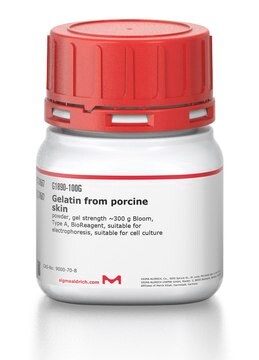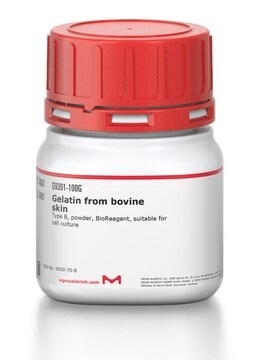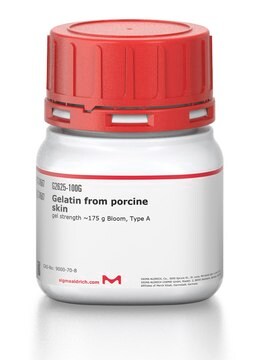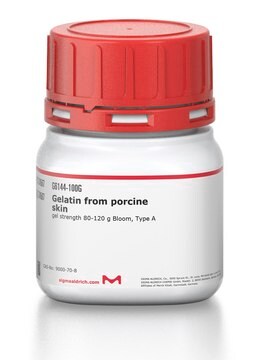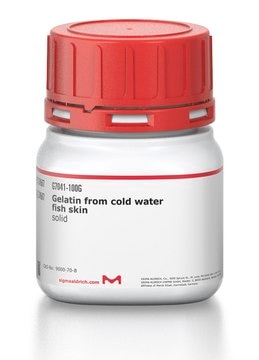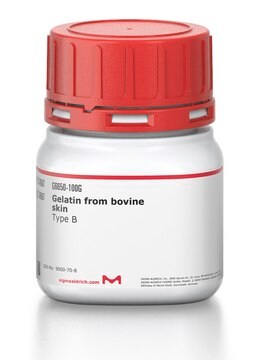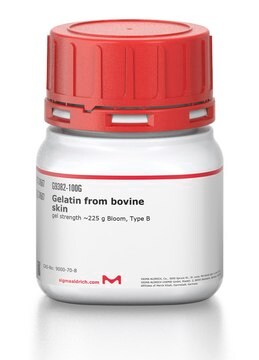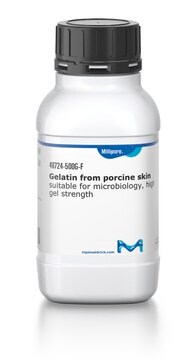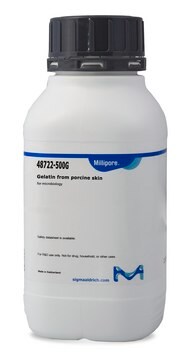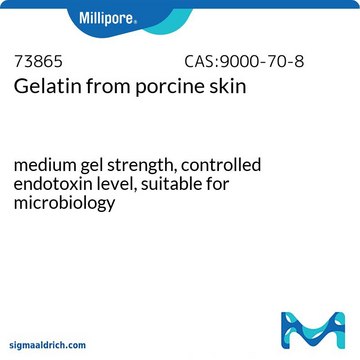G9136
Porcine Gelatin
from porcine skin, Type A, powder, γ-irradiated, suitable for cell culture, BioXtra
About This Item
Productos recomendados
product name
Gelatina from porcine skin, Type A, lyophilized powder, γ-irradiated, BioXtra, suitable for cell culture
origen biológico
Porcine skin
Nivel de calidad
esterilidad
γ-irradiated
tpo
Type A
Línea del producto
BioXtra
formulario
lyophilized powder
envase
pkg of 10 mg
técnicas
cell culture | mammalian: suitable
cobertura de la superficie
100‑200 μg/cm2
fuerza de gel
~300 g Bloom
solubilidad
soluble 20 mg/mL, clear, colorless (in warm tissue culture medium)
Condiciones de envío
ambient
temp. de almacenamiento
room temp
¿Está buscando productos similares? Visita Guía de comparación de productos
Aplicación
Gelatin has been used in many applications. It has use in coating cell culture to improve attachment of cells, being added to PCR to stabilize Taq DNA, as a blocking reagent in Western blotting, ELISA, and immunochemistry, and as a component of media for species differentiation in bacteriology. As a biocompatible polymer, it has used as a delivery vehicle for release of active biomolecules and in generation of scaffolds for tissue engineering applications. In the pharmaceutical industry, geltan can be used as a suspending and encapsulating agent, among other applications.
Componentes
Precaución
Nota de preparación
This product is a type A lyophilized powder, suitable for cell culture, with a gel strength of 300.
Código de clase de almacenamiento
11 - Combustible Solids
Clase de riesgo para el agua (WGK)
nwg
Punto de inflamabilidad (°F)
Not applicable
Punto de inflamabilidad (°C)
Not applicable
Equipo de protección personal
Eyeshields, Gloves, type N95 (US)
Certificados de análisis (COA)
Busque Certificados de análisis (COA) introduciendo el número de lote del producto. Los números de lote se encuentran en la etiqueta del producto después de las palabras «Lot» o «Batch»
¿Ya tiene este producto?
Encuentre la documentación para los productos que ha comprado recientemente en la Biblioteca de documentos.
Los clientes también vieron
Artículos
Cancer stem cell media, spheroid plates and cancer stem cell markers to culture and characterize CSC populations.
Nuestro equipo de científicos tiene experiencia en todas las áreas de investigación: Ciencias de la vida, Ciencia de los materiales, Síntesis química, Cromatografía, Analítica y muchas otras.
Póngase en contacto con el Servicio técnico